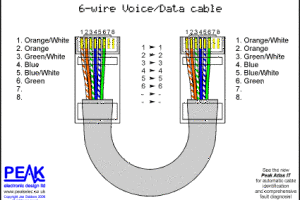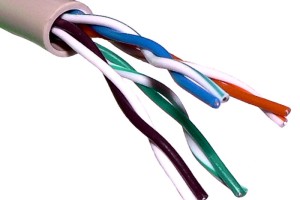Network Cabling in Public Spaces
Traditionally, in the world of network cabling, structured cabling as a process is applied to a single building, unit, or room. These can be offices, homes, or private businesses. The intent is generally to provide internet access to those who use the space, or to create an internal computer network within the space to serve the purpose of connecting individuals and sharing information. There has been a recent movement toward cabling networks, particularly wireless networks accessible in public places.
Wireless Networks
This concept of public internet access has a fairly broad range of applications. Sometimes universities and colleges will support a campus wide wireless network, accessible to all those affiliated individuals who have the security code. Another example is malls and shopping centers who will have a strong wireless network meant to be shared with patrons and internal businesses. These examples are still in terms of ‘spot to spot’ wireless availability. This means that individuals must switch networks as they move from place to place, and usually must be affiliated financially with the networks they use. Municipal wireless networks or ‘Muni-fi’s are a bit different. They are city or region-wide wireless networks supported publicly by taxes paid. Sometimes, they span a single public outdoor space like a park or national protected land area, but more commonly they are a universal internet service and includes the whole city or town. This form of networking turns the entire area into a wireless access zone and provides businesses, homes, and citizens with consistent internet access in all locations. They are usually done in a mesh design in which signals are projected from poles and internally looped to hum up a strong signal. This takes the idea of citizens piggybacking on the wireless networks of cafes and libraries, and expands it into a sort of communal piggybacking.
Network Cabling Agencies
In New York City, Transit Wireless, along with the MTA (Metro Transit Authority) has been working to install wireless networks in the subways stations. The prototype began to function last year in several Chelsea stations on the west side of Manhattan. This year, the project has expanded to major hubs like Rockefeller center and Grand Central Station. These networks will allow not only cell phone reception for the millions of subway riders every year, but also free internet access during long subway train wait periods. This a public project, though it is greatly supported by several private agencies who would benefit from having patrons able to stay on their devices longer when underground. As the success of this installation expands, all subway stations will have networks, and eventually the possibility of individual trains having networks installed is high. Though many parks in NYC have wireless networks, the city at large has, as of yet, no Muni-fi to speak of, though it seems that that is the direction more metropolitan areas are heading.
Structured Cabling Industry
There is a pretty heated debate about the pros and cons of large public access wireless networks. The idea to is to bring the cost of wireless down for the community at large, and standardize it through the local government. This would be a great public service to those who cannot otherwise afford internet. It also provides a big boost in jobs to the structured cabling industry, keeping installers and technicians employed steadily with public funds. There are those who say muni-fi curtails the free trade of businesses who provide private wireless access as well has gives ‘big brother’ the availability to censor and control information moving in public and private spheres. However, as the debate continues, public networks continue to be constructed, and used by the population.




